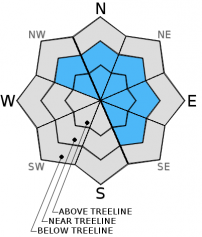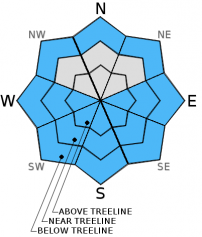| Wednesday | Wednesday Night | Thursday | |
|---|---|---|---|
| Weather: | Partly cloudy then becoming sunny. | Clear | Sunny |
| Temperatures: | 42 to 49 deg. F. | 23 to 29 deg. F. | 46 to 53 deg. F. |
| Mid Slope Winds: | |||
| Wind Speed: | Light winds | Light winds | Light winds |
| Expected snowfall: | 0 | 0 | 0 |
| Wednesday | Wednesday Night | Thursday | |
|---|---|---|---|
| Weather: | Partly cloudy then becoming sunny. | Clear | Sunny |
| Temperatures: | 40 to 46 deg. F. | 21 to 28 deg. F. | 42 to 49 deg. F. |
| Ridge Top Winds: | SE | E | SW |
| Wind Speed: | 10 to 15mph. | 10 to 15mph in the evening becoming light. | 10 to 15mph. |
| Expected snowfall: | 0 | 0 | 0 |

























